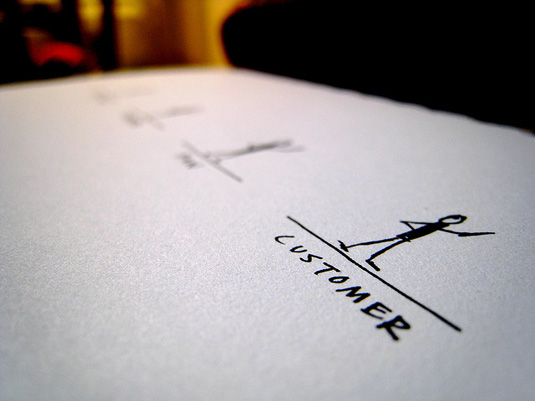Customer Experience Strategy Best Practices
 Customer experience. It’s what separates the great businesses from the hacks. The happy customers from the angry and frustrated. It’s the moment of truth.
Customer experience. It’s what separates the great businesses from the hacks. The happy customers from the angry and frustrated. It’s the moment of truth.
The second a prospective customer decides to interact with, and potentially buy from, your business, you’re officially on the clock.
Every interaction and touch point matters. You want (need) to create an experience they’ll not only remember, but one that will ultimately lead to a sale and their repeat business. That’s the obvious part. But to get there, you need a plan—a strategy built around customer experience best practices.
Recently I had a chance to speak with Lynda Smith, chief marketing officer of San Francisco-based Twilio, a software and cloud communications platform company, about the customer journey during their “Engineering The Customer Experience Roadshow.” Here are the top customer experience strategy best practices.
Map customer experiences from end-to-end
What should that very first interaction look like? What about what happens after they make the purchase? Do they have a smartphone? Answers to those questions will go a long way in helping you craft your strategy. “You work hard to draw visitors to your store, get people in the door, and make a purchase,” said Smith. “Mapping the customer experience from end to end helps make their buying experience one they’ll remember,” she added.
Don’t overlook the small things—including how (and who) answers the phone. Anticipate potential questions and requests and develop a plan to make sure your staff has the right resources, training, and technology to help.
Focus on every customer interaction
I’ll never forget the time I called a local pizza shop and asked for any recommendations from the person who answered the phone. “I’m not sure. I have a flour allergy.”
Read More >> Setting Customer Expectations (Without Totally Blowing It)
Besides her questionable career choice of deciding to work at a pizza shop with a flour allergy, she totally blew it. Instead of focusing on a negative, she could have just as easily shared recommendations based on customer feedback. She was on the front lines. Our only interaction with that business. And not surprisingly, we haven’t been back.
Provide exceptional customer support
Customers are going to have questions. They’re going to need support. Support that’s personalized, friendly, and professional.
Zappos built an empire on it.
Think back to the customer experience mapping mentioned above. Do you make it easy for someone to get in touch with your business if they have questions? Or do you bury your phone number in the footer of your website or way down on your contact page? Do you acknowledge receipt of their inquiry? Do you follow up in a timely fashion (within 24 hours at the absolute latest).
Finally, don’t assume the customer experience ends once someone makes a purchase. Depending on your product or service, that could be the beginning of their journey.
Maximizing the customer experience “moment of truth”
How do you interact with your customers? Where can you create a better experience? “It’s all about the moments of truth. Once you’ve got their attention, what are you going to do with them?” A parting question from Smith that all businesses need to answer.
Share your thoughts in the comments below.
[Image: Flickr 10ch]

Leave a comment